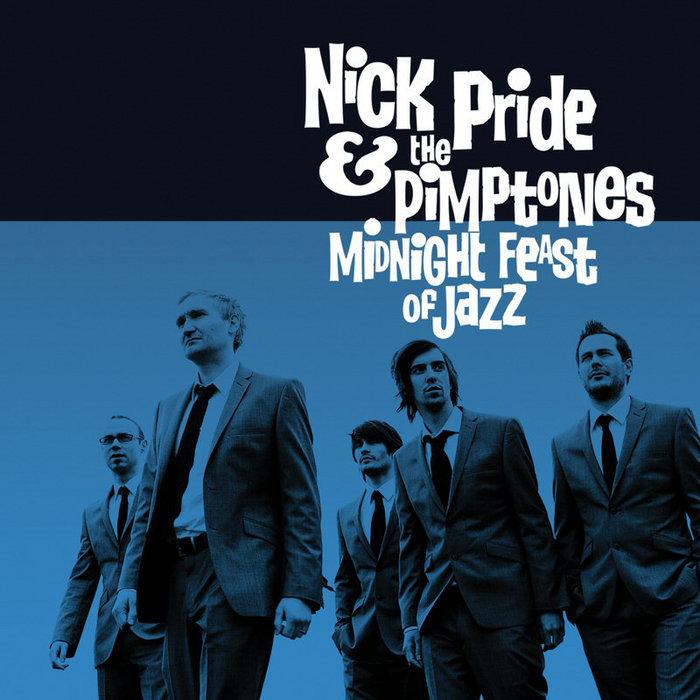
Waitin’ So Long feat. Jess Roberts – Nick Pride & The Pimptones
this blog is GROOVY – check out great Soul, Funk, Jazz, Hip Hop, Bass, Breaks , Reggae, House n many more TUNES
Welcome, fellow music lovers and funky explorers! Settle into your cozy bean bag chair as we dive deep into the colorful universe of pimptones. This quirky genre is all about good vibes, catchy hooks, and some seriously smooth grooves—so grab your favorite beverage, and let’s get this party started!
Pimptones isn’t a commonly known genre like rock or hip-hop; instead, it embodies a playful blend of funk, soul, and sultry rhythms characterized by witty lyrics and groovy basslines. Think of pimptones as the love child of disco balls and velvet suits! It sizzles with a hint of humor sprinkled on top—a dash that makes it all the more fun.
The roots of pimptones can be traced back to the vibrant streets where funk began its glorious journey in the late 1960s. Artists like James Brown, often dubbed the “Godfather of Soul,” laid down those irresistible grooves that would inspire many later musicians to add their own twist.
In fact, you could say pimptone artists are like DJs at an intergalactic dance party—mixing sounds from diverse genres while staying true to one fundamental rule: make ‘em move! The 70s disco scene also played heavily into this soundscaping mix. Remember those glitter balls spinning overhead? They were practically screaming for some pimpy beats!
As we step deeper into our funky narrative, let’s highlight some kooky characters who’ve embodied this vibe over time:
Ah yes—the legendary Bootsy Collins! With his star-shaped glasses and flamboyant outfits (seriously folks—check out those space boots), Bootsy didn’t just bring bass; he brought charisma! Legend has it he once wore a costume made entirely outta glow-in-the-dark fabric during a gig. Talk about lighting up the stage!
Funny Fact: Bootsy famously declared himself “the most psychedelic funkateer” but had enough sense to keep his day job working for none other than George Clinton before making it big. Now that’s what we call dedication!
Speaking of George Clinton… He created Parliament-Funkadelic—a collective so wild they might make your head spin faster than Lady Gaga at a fashion show! His motto? “Free your mind… and your ass will follow.” Sounds good to us!
Fun Tidbit: George actually used real-life experiences as inspiration for songs. For instance, “Atomic Dog,” one famous track was born after watching his dog run around—now that’s taking inspiration from everyday life straight onto record!
And who can forget Prince? With his silky voice cuddled in purple satin attire—that man redefined funky coolness while delivering hits that’ll forever be etched in our hearts (and playlists)!
Quirky Story Alert: Prince was not only musically gifted but also an avid basketball player truthfully believing he could dominate court just as easily as commanding ladies’ hearts with his guitar solos—and guess what? He did have quite a reputation among both fans and opponents alike!
Fast forward to today’s music scene—the spirit lives on through modern permutations blending elements from electronic beats or hip-hop flows riding shiny rhythms reminiscent yet distinctively new.
Artists like Bruno Mars sprinkle pizazz akin to pimp tones without even trying too hard; tracks such as 24K Magic groove right through old-school revival vibes mixed with freshness bringing jazzy twirls amid booming bass lines—it just works perfectly!
Let us not forget over-enthusiastic sampling which has become essential across generations putting everyone near each other singing along together creating truly unified dance floors…it’s infectious baby!!!
Funky performance pieces incorporate everything—from unconventional jams featuring saxophones honking alongside DJ remixes giving electrifying energy transfixed audiences everywhere they go…as if transported directly back ‘life’ itself when visiting these spaces…and saying goodbye doesn’t feel easy either!!!
So here we are—navigating through hilarious exploits surrounding musicians showcasing personalities equally scintillating within unique journeys across timezones sonically colliding widely upon sharing stages worldwide transforming countless bland moments leaving everyone feeling pretty darn awesome all night-long!! Whether you’re channeling melodies under strobe lights at clubs or chilling sessions flipping vinyl records beneath sparkling stars-pimpy tunes ignite fiery joyousness wherever people gather!!
Now next time someone asks you what’s up with pampered “pimps”—smile knowingly because friends know there’s no limit when fun meets style rooted ever-so-deeply within musical notes vibrating unheard frequencies allowing laughter & memory-making opportunities lasting long after every beat fades away…
Until next groove session stay fly my friends ✌️🕺🎶✨

Waitin’ So Long feat. Jess Roberts – Nick Pride & The Pimptones